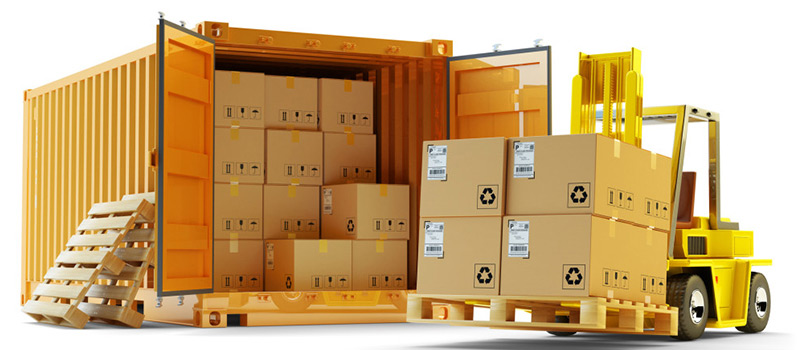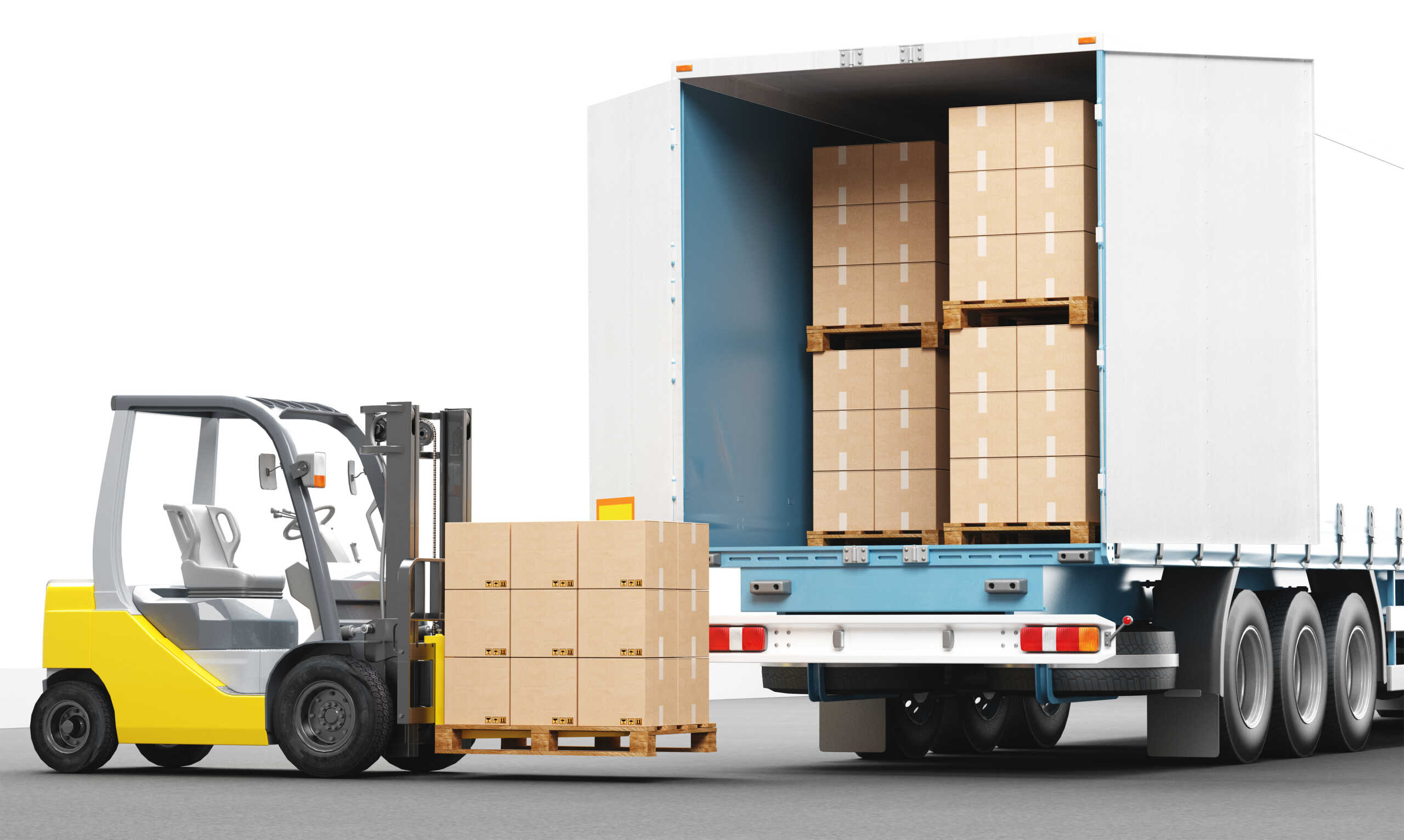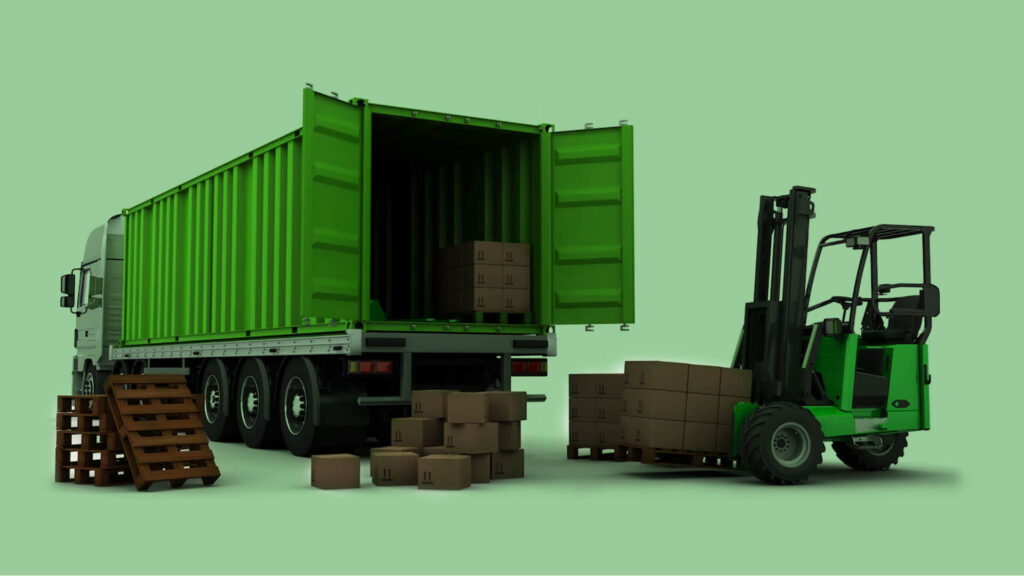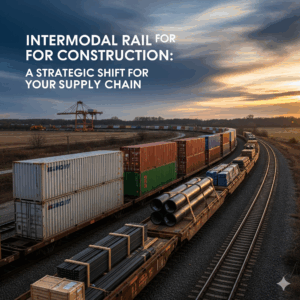In today’s fast-evolving logistics landscape, mastering shipment consolidation and deconsolidation has become essential for businesses aiming to streamline their supply chains, cut costs, and improve delivery efficiency. As global trade volumes surge and customer expectations for faster, more reliable deliveries grow, leveraging smart strategies like shipment consolidation and deconsolidation is critical to gaining a competitive edge in 2024.
Shipment consolidation and deconsolidation are complementary logistics processes that significantly impact how goods move through the supply chain. Shipment consolidation involves combining multiple smaller shipments into a single, larger shipment, optimizing transportation costs and reducing handling complexity. Conversely, shipment deconsolidation refers to breaking down these larger shipments at designated points, such as distribution centers or cross-dock facilities, for onward delivery to final destinations.
Understanding the ins and outs of shipment consolidation and deconsolidation helps shippers and logistics providers optimize freight flows, reduce freight costs, enhance inventory management, and improve overall supply chain agility. In this comprehensive guide, we’ll explore the core concepts, key benefits, challenges, and best practices for shipment consolidation and deconsolidation that every logistics professional and business leader should know in 2024.
What Is Shipment Consolidation and Why Does It Matter?
Shipment consolidation is the process of grouping multiple smaller shipments or orders into a larger shipment, which can then be transported more efficiently. This process is especially vital in industries where goods are shipped frequently in smaller volumes, such as retail, manufacturing, and e-commerce. By consolidating shipments, companies reduce the number of individual transport moves, which leads to lower freight costs and minimized environmental impact.
In 2024, with rising fuel prices and increasing pressure to operate sustainably, shipment consolidation offers tangible cost savings and carbon footprint reduction. Consolidated shipments often qualify for better freight rates because carriers prefer moving full truckloads or containers rather than multiple less-than-truckload (LTL) shipments.
Moreover, shipment consolidation improves warehouse operations by reducing handling times and simplifying logistics planning. This efficiency boost translates to quicker turnaround times and more predictable delivery schedules—key factors in satisfying today’s demanding customer expectations.
Deconsolidation: The Other Side of the Coin
While shipment consolidation focuses on bringing shipments together, shipment deconsolidation is the process of breaking these bulk shipments down into smaller, manageable lots for final delivery or distribution. This occurs typically at regional distribution centers, cross-docking facilities, or ports.
Shipment deconsolidation allows companies to manage inventory efficiently and fulfill customer orders from centralized locations. It enables better last-mile delivery coordination and reduces transit delays by ensuring goods are routed accurately to their end destinations.
In 2024’s increasingly complex supply chains, shipment deconsolidation also plays a crucial role in omnichannel fulfillment strategies. For example, retailers might receive consolidated shipments from manufacturers or suppliers, then deconsolidate products for distribution across physical stores, e-commerce warehouses, or directly to consumers.
The Synergy of Shipment Consolidation and Deconsolidation
The real power of shipment consolidation and deconsolidation lies in their seamless integration. By consolidating shipments early in the supply chain and strategically deconsolidating them near the point of delivery, companies achieve a highly efficient, flexible logistics model.
This synergy reduces transportation costs, lowers environmental impact, and enhances service levels. It enables businesses to leverage economies of scale during transit while maintaining granular control over last-mile deliveries—a critical advantage in 2024’s customer-centric market.
Key Benefits of Shipment Consolidation and Deconsolidation in 2024
- Cost Reduction: Consolidated shipments reduce freight charges through volume discounts and fewer individual shipments. Deconsolidation supports efficient last-mile delivery, avoiding costly small shipments from origin points.
- Operational Efficiency: Simplifies warehousing and transportation processes by reducing handling frequency and optimizing routes.
- Enhanced Supply Chain Visibility: Integrated consolidation and deconsolidation allow for better tracking and coordination across multiple transport legs.
- Sustainability: Fewer shipments and optimized transportation lower carbon emissions, aligning with growing environmental regulations and corporate responsibility goals.
- Improved Customer Service: Faster, more predictable deliveries driven by optimized logistics planning and strategic distribution hubs.
Challenges to Consider
Despite the clear advantages, managing shipment consolidation and deconsolidation presents operational challenges. These include coordinating timing between multiple suppliers and carriers, ensuring accurate inventory handling during deconsolidation, and investing in technology for tracking and process management.
In 2024, advancements in warehouse automation, AI-powered route optimization, and digital freight platforms are helping businesses overcome these hurdles, enabling more sophisticated and scalable consolidation and deconsolidation operations.
Best Practices for Implementing Shipment Consolidation and Deconsolidation
- Leverage Technology: Utilize Transportation Management Systems (TMS) and warehouse management software to coordinate and track shipments effectively.
- Strategic Location Selection: Place consolidation and deconsolidation hubs near key transport corridors or demand centers to minimize transit times.
- Collaboration with Partners: Work closely with carriers, suppliers, and third-party logistics providers to align schedules and share real-time information.
- Customer-Centric Planning: Design consolidation and deconsolidation workflows that support delivery windows and service expectations.
- Continuous Improvement: Regularly analyze performance metrics to identify bottlenecks and optimize processes for cost savings and service quality.
In 2024, mastering shipment consolidation and deconsolidation is vital for companies looking to optimize logistics operations, reduce costs, and improve delivery performance. By understanding the strategic interplay of these processes and leveraging emerging technologies, businesses can build resilient, agile, and sustainable supply chains ready for the future.

What Does Freight Shipping Consolidation Mean?
In freight shipping consolidation means combining smaller shipments into one larger one. This lowers costs by maximizing space and can speed up delivery by bypassing sorting. However, it requires careful planning as consolidated shipments involve more handling. But when done well, consolidation is a powerful tool for efficient shipping.
What Does Freight Shipping Deconsolidation Mean?
Think of a delivery truck filled with boxes from different stores. That’s consolidation in shipping! When it arrives at a central hub, those boxes need to be sorted and sent on to their final customers – that’s deconsolidation. It can get more complex though, with some cargo needing to be sorted, then grouped back together based on where it’s going. And ultimately separated into individual packages. Because of this, many businesses use third-party logistics providers to handle the tricky job of deconsolidation.
Difference Between Shipment Consolidation And Deconsolidation
In freight shipping, consolidation and deconsolidation are two sides of the same coin. Consolidation involves combining multiple smaller shipments into a single, larger one to maximize space and potentially speed up delivery.
Imagine a delivery truck with empty space being filled with boxes from different businesses. Deconsolidation, on the other hand, is the process of unpacking this larger shipment at its destination and sorting the individual packages to their final deliveries.
It can sometimes involve regrouping cargo based on specific destinations before the final separation into individual packages. Understanding both processes is crucial for optimizing shipping efficiency.
The Benefits Of Shipment Consolidation And Deconsolidation
Ever feel overwhelmed by freight shipping costs? Look no further than consolidation and deconsolidation, your secret weapons for optimizing both cost and inventory management.
- Cost-Conscious Consolidation
Imagine a truck with multiple empty spaces. Consolidation allows shippers to combine several smaller shipments into this single truck, maximizing its capacity. This translates to significant cost savings. Instead of paying for an entire container (FCL/FTL) even with limited cargo, consolidation lets shippers share the space and cost with others. This shared space approach is particularly beneficial for businesses that don’t typically ship large volumes at once and is a cheap shipping method.
But the benefits extend beyond just cost reduction. Consolidation can also lead to:
- Faster Delivery: Consolidated shipments may bypass sorting facilities, potentially leading to quicker delivery times, a crucial advantage in today’s fast-paced market.
- Deconsolidation: Streamlining the Final Mile
Once a consolidated shipment reaches its destination, the magic of deconsolidation comes into play. Here, the previously combined cargo is meticulously separated and delivered to its final individual destinations. Think of it as un-packing the truck, ensuring each item reaches its intended recipient.
Deconsolidation isn’t just about separating shipments. It offers additional advantages:
- Optimized Distribution: Deconsolidation allows for the cargo to be strategically distributed to locations closer to the final markets. This streamlines the final leg of the delivery process, potentially reducing costs and ensuring timely product availability for customers.
- Inventory Management Made Easy
The beauty of consolidation and deconsolidation lies in their combined effect on inventory management. Businesses no longer have to wait to fill an entire container before shipping. They can consolidate and ship products as soon as they are ready, avoiding delays and ensuring a steady flow of goods to meet market demands.
- Leveraging Expertise: The Role of 3PLs
While consolidation and deconsolidation offer clear advantages, the process can become intricate, especially for businesses unfamiliar with the logistics landscape. This is where third-party logistics providers (3PLs) come in. Partnering with a reputable 3PL can provide valuable expertise in managing these processes, offering benefits like:
- Clear Visibility: 3PLs offer real-time tracking and status updates on cargo movement, allowing businesses to optimize inventory planning and customer communication.
- Expertise and Efficiency: Experienced 3PLs have the infrastructure and knowledge to navigate complex deconsolidation processes seamlessly.
The Disadvantages of Shipment Consolidation and Deconsolidation
Consolidating and deconsolidating freight can be complex due to multiple parties and destinations involved. Here are the main problems with this method -.
- Navigating the Maze of Logistics:
One of the primary challenges related with consolidation and deconsolidation lies in their intricate nature. Securing the right amount of space for consolidation and ensuring accurate deconsolidation at the other end can be a logistical challenge. This intricate task involves multiple “touchpoints” at the various locations and service providers that handle the cargo throughout its journey.
Additionally, the process often involves diverse destinations, further adding to the complexity. Many businesses, recognizing this intricate web, choose to partner with seasoned third-party logistics (3PL) companies. These experienced partners can navigate the complexities of consolidation and deconsolidation, ensuring a smooth and efficient flow of goods.
- Communication: The Missing Link?
Another potential hurdle lies in communication breakdowns. Consolidated shipments, by their very nature, are handled at numerous stages. The chosen mode of transport, the route taken, and the final destination all influence the handling points involved. And coordinating communication between these numerous entities can be overwhelming, potentially leading to a lack of visibility and status updates for the shipper.
This information blackout can be fatal, hindering the ability to track progress and anticipate potential delays.
The solution? Partnering with a reliable 3PL can significantly improve your visibility. These companies leverage their expertise and technology to provide clear and regular status reports on your shipments, keeping you informed throughout the entire journey.
- Planning and Security: A Delicate Balance
Effective planning and cargo security are paramount when considering consolidation and deconsolidation. Without an end-to-end view of how your freight moves, from the initial consolidation to the final deconsolidation, the process can become risky, inefficient, and ultimately expensive. The increased number of handling points associated with consolidation inherently raises the risk of damage or loss.
Robust tracking and visibility measures implemented at each stage are crucial for mitigating these risks. Additionally, minimizing the number of touchpoints whenever possible helps ensure product integrity and value are maintained.
- The Potential for Delays: A Factor to Consider
It’s important to acknowledge that consolidated shipments cannot reach their final destinations without the critical step of deconsolidation. Several factors can potentially delay this process, ultimately impacting the final delivery timeline to your customers or the next step in your supply chain. These delays may arise from timing issues, challenges in managing the yard where the cargo is deconsolidated, or even unforeseen circumstances.

Is Shipment Consolidation and Deconsolidation for you?
Deconsolidation plays a vital role in optimizing your supply chain, particularly when dealing with multiple destinations or needing faster product delivery. It’s the process of unpacking a consolidated shipment upon arrival at its final hub, sorting individual packages, and directing them to their final destinations.
Benefits of Deconsolidation:
- Faster Speed to Market: By eliminating the need for additional sorting at the final destination, deconsolidation allows for quicker product delivery, potentially giving you a competitive edge.
- Efficient Distribution for Multi-Location Deliveries: Deconsolidation is ideal for businesses with shipments destined for various locations. It streamlines the offloading process and facilitates faster redistribution to individual stores or customers.
- Enhanced Inventory Management: Efficient deconsolidation allows for better inventory control, enabling businesses to maintain optimal stock levels at various locations.
So, ship multiple items from scattered locations? Consider a consolidator! They combine your shipments, saving you money on bulk rates and streamlining the process by dealing with just one entity. Evaluate your needs to see if a consolidator is the perfect fit!
Conclusion: Shipment Consolidation And Deconsolidation
As we conclude this in-depth guide to shipment consolidation and deconsolidation in 2024, it’s clear that mastering these logistics strategies is a game-changer for businesses aiming to optimize their supply chains and reduce overall costs. The evolving demands of modern commerce, combined with increased environmental regulations and rising transportation expenses, make shipment consolidation and deconsolidation more relevant than ever.
By effectively consolidating shipments, companies can dramatically reduce freight costs by maximizing container or truckload utilization, minimizing handling, and securing volume discounts. This approach not only cuts expenses but also reduces the carbon footprint of shipments—an important consideration in today’s sustainability-conscious market.
Cost Efficiency and Operational Excellence Through Shipment Consolidation
In 2024, one of the most compelling reasons to focus on shipment consolidation is the significant cost savings it delivers. Consolidating multiple smaller shipments into one larger shipment reduces the number of individual transport moves, leading to lower freight charges and less handling. This efficiency translates to savings on fuel, labor, and administrative costs. Moreover, consolidators benefit from enhanced bargaining power with carriers, securing better rates and preferential services.
Shipment consolidation also improves operational workflows in warehouses and distribution centers. Handling fewer, larger shipments streamlines receiving and shipping processes, cuts down on potential errors, and accelerates turnaround times. This operational excellence directly contributes to improved supply chain reliability and customer satisfaction.
The Crucial Role of Shipment Deconsolidation for Last-Mile Delivery
While consolidation optimizes the long-haul transport phase, shipment deconsolidation plays an equally critical role closer to the final destination. Deconsolidation enables the breakdown of bulk shipments into smaller, tailored loads suitable for local distribution, retail replenishment, or direct-to-consumer deliveries.
This process is especially important given the complexity of today’s distribution networks and the rise of omnichannel retailing. Businesses must deliver goods to multiple endpoints efficiently and on time. Effective deconsolidation ensures shipments are accurately sorted and routed, minimizing delays and reducing the risk of damage or misdelivery.
Environmental Benefits and Sustainability of Shipment Consolidation And Deconsolidation
The integration of shipment consolidation and deconsolidation significantly supports corporate sustainability goals. Consolidated shipments mean fewer trucks on the road and more efficient use of rail and maritime transport, which are inherently greener modes. Deconsolidation hubs can be strategically placed to minimize empty miles and enable optimized last-mile deliveries.
In 2024, as governments and consumers demand greener logistics solutions, companies that leverage shipment consolidation and deconsolidation will not only lower costs but also demonstrate environmental stewardship—a critical component of brand reputation and regulatory compliance.
Overcoming Challenges with Technology and Collaboration
While the benefits are clear, executing efficient shipment consolidation and deconsolidation requires overcoming several challenges. Coordinating schedules among multiple suppliers, managing inventory accuracy during transfers, and maintaining real-time visibility across the supply chain can be complex.
Fortunately, advances in technology are making these tasks easier. Transportation Management Systems (TMS), Warehouse Management Systems (WMS), and digital freight platforms enable seamless coordination and provide end-to-end visibility of shipments. Real-time tracking, AI-driven route optimization, and automated documentation streamline operations and reduce errors.
Collaborative relationships with logistics partners—carriers, 3PLs, and freight forwarders—also play a vital role in successful consolidation and deconsolidation strategies. Transparent communication and aligned incentives help ensure timely shipments and effective problem-solving when issues arise.
Best Practices to Maximize Shipment Consolidation and Deconsolidation Benefits
To fully realize the advantages of shipment consolidation and deconsolidation in 2024, companies should adopt a strategic, data-driven approach:
- Analyze Freight Flows: Identify routes and shipment types that offer the greatest potential for consolidation savings and deconsolidation efficiency.
- Invest in Technology: Implement TMS and WMS solutions that facilitate planning, execution, and real-time monitoring of shipments.
- Select Strategic Locations: Establish consolidation and deconsolidation hubs near major transport corridors and demand centers for faster, more efficient handling.
- Build Strong Partnerships: Collaborate closely with carriers and logistics providers experienced in consolidation and deconsolidation operations.
- Focus on Continuous Improvement: Use performance metrics such as cost per shipment, delivery times, and damage rates to refine processes and enhance service quality.
Final Thoughts: Preparing Your Supply Chain for the Future
In 2024, the dual strategies of shipment consolidation and deconsolidation are indispensable tools for companies seeking to build efficient, resilient, and sustainable supply chains. By optimizing freight consolidation and strategically breaking shipments down closer to delivery points, businesses can reduce costs, improve customer satisfaction, and lower their environmental impact.
Forward-thinking organizations that embrace these logistics best practices and invest in technology will be well-positioned to meet the challenges of an increasingly complex global marketplace. Shipment consolidation and deconsolidation are not just operational tactics—they are strategic imperatives that drive competitive advantage and supply chain excellence.
Take the Next Step with RailGateway
If you’re ready to harness the power of shipment consolidation and deconsolidation to transform your logistics in 2024, partnering with an expert provider like RailGateway can make all the difference. With deep knowledge of Canadian rail networks, intermodal expertise, and innovative technology solutions, RailGateway helps businesses optimize freight flows, reduce costs, and enhance supply chain visibility.
Learn more about how RailGateway can support your shipment consolidation and deconsolidation needs at railgateway.ca, and start building a smarter, more efficient supply chain today.

FAQ’s
1. What is shipment consolidation?
Shipment consolidation is the process of combining multiple smaller shipments into one larger shipment. This optimizes transportation efficiency, reduces freight costs, and minimizes handling throughout the supply chain.
2. What does shipment deconsolidation mean?
Shipment deconsolidation involves breaking down a large consolidated shipment into smaller units at a distribution or cross-dock facility for delivery to multiple final destinations.
3. How do shipment consolidation and deconsolidation work together?
Consolidation groups shipments for cost-effective long-haul transport, while deconsolidation ensures these shipments are divided and routed appropriately for last-mile delivery, improving overall logistics efficiency.
4. How does shipment deconsolidation improve delivery performance?
Deconsolidation enables precise sorting and routing of goods, allowing businesses to meet diverse delivery requirements, improve order accuracy, and accelerate delivery times.
5. Can shipment consolidation and deconsolidation reduce environmental impact?
Yes. By maximizing load utilization and using greener modes like rail and sea for consolidated shipments, companies reduce fuel consumption and carbon emissions.
6. What types of businesses benefit most from shipment consolidation and deconsolidation?
Retailers, manufacturers, e-commerce companies, and distributors with frequent smaller shipments or complex delivery networks gain the most from these strategies.
7. What are common challenges in managing shipment consolidation and deconsolidation?
Challenges include coordinating multiple carriers and suppliers, managing inventory accuracy during transfers, and maintaining real-time shipment visibility.
8. How can technology support shipment consolidation and deconsolidation?
Transportation Management Systems (TMS), Warehouse Management Systems (WMS), and digital freight platforms enhance coordination, tracking, and process automation.
9. Where should consolidation and deconsolidation facilities be located?
Facilities should be strategically placed near major transport corridors, ports, or demand centers to optimize transit times and reduce handling costs.
10. How can I get started with shipment consolidation and deconsolidation?
Begin by assessing your current shipment patterns and volume, then collaborate with experienced logistics partners to design a tailored consolidation and deconsolidation strategy.





